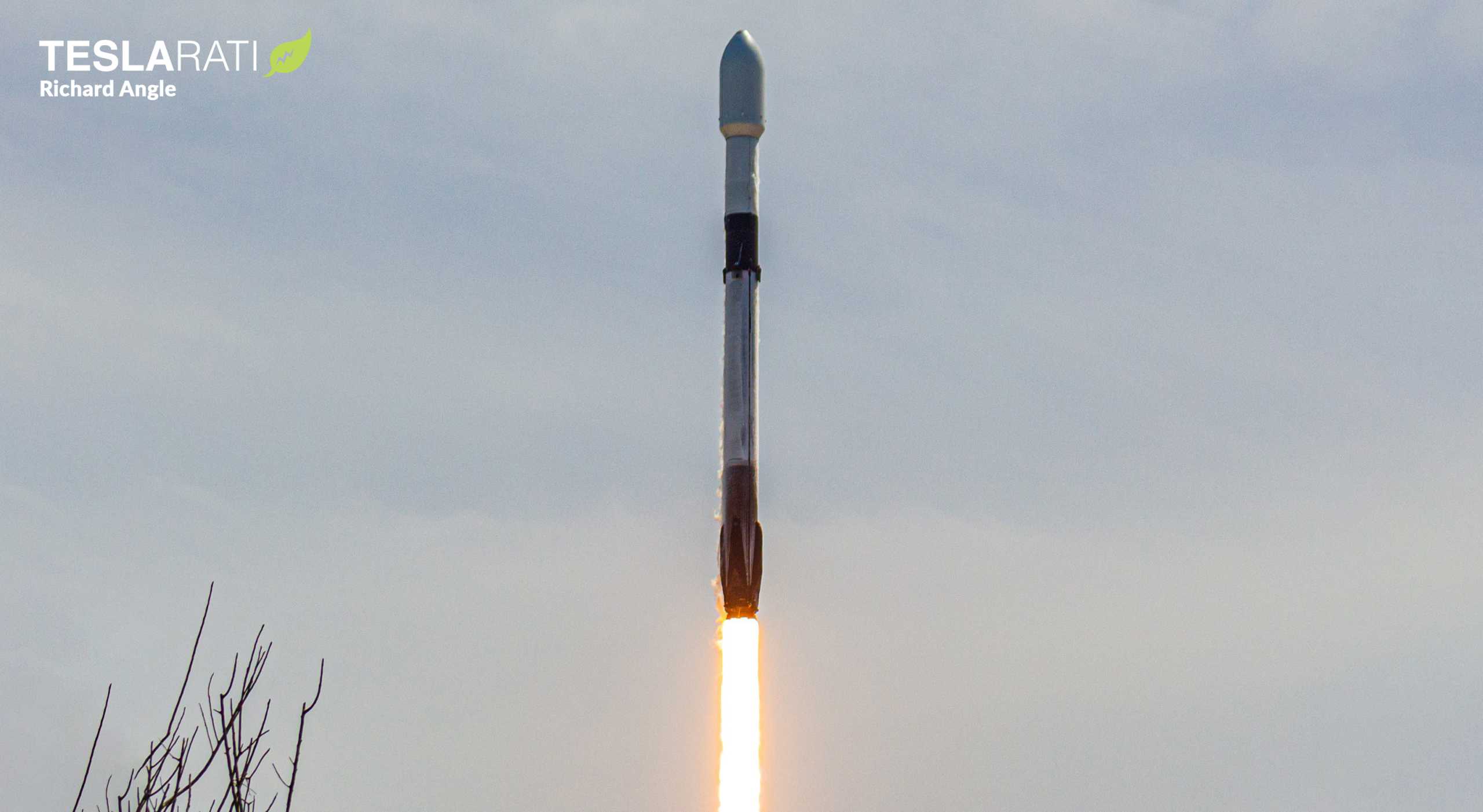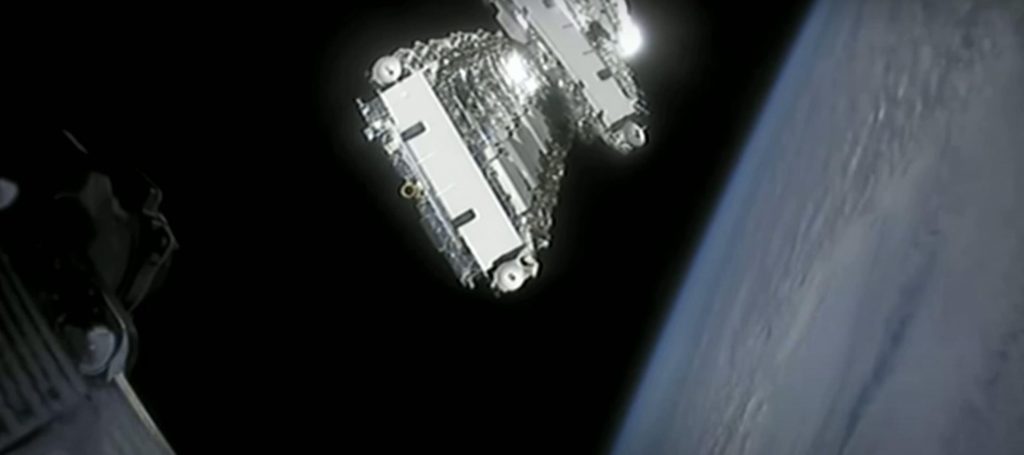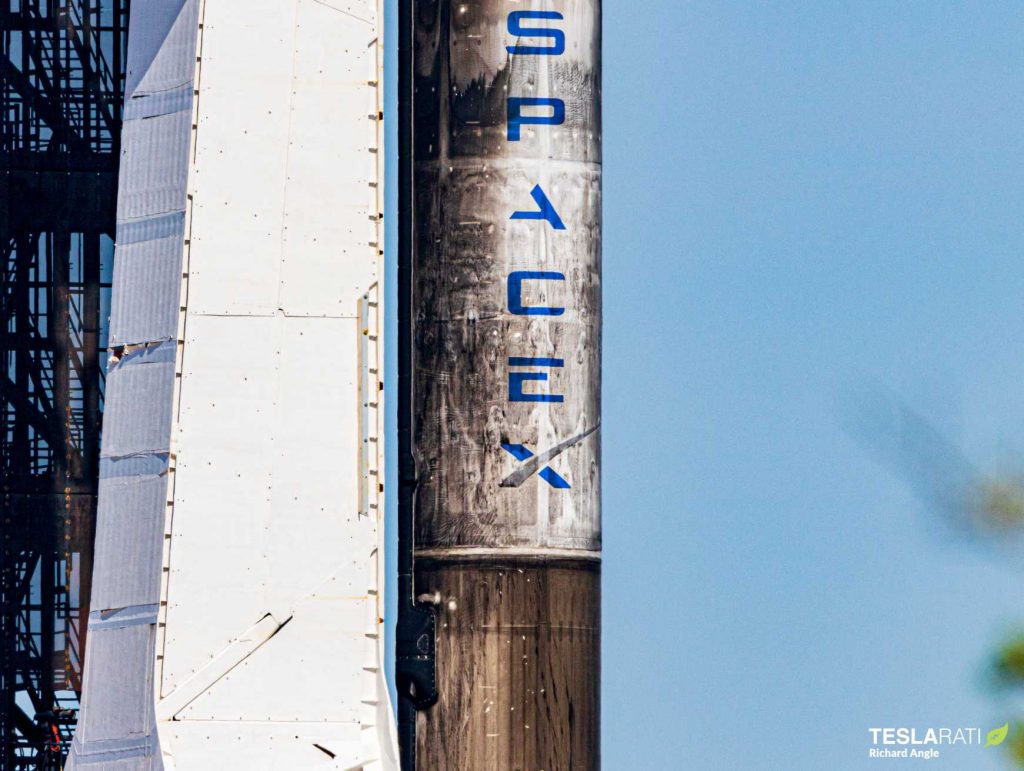

News
SpaceX Starlink a step closer to internet service and Elon Musk has beta test details
SpaceX’s successful April 22nd Starlink launch has brought the nascent constellation another step closer to serving customers internet and CEO Elon Musk has revealed the first significant beta test details.
SpaceX kicked off 60-satellite Starlink launches with its revolutionary flat-pack design in May 2019, a mission that served as a beta test for the new design and launched “v0.9 spacecraft”. The company finalized the “v1.0” Starlink satellite design shortly thereafter and began its operational launch campaign in November 2019. In the five subsequent months, SpaceX has completed six Starlink v1.0 launches, placing 360 satellites in orbit for a total of 422 as of today. Of the 422 spacecraft launched, ~415 remain operational and a small handful have been deorbited in the last few months.
The ultimate purpose of Starlink, of course, is to serve high-quality internet to customers anywhere on Earth, ranging from the deep winter Arctic to the middle of the Australian outback – places that are fundamentally underserved. Eventually, SpaceX may seek to open service to other less challenged locations and the extraordinarily ambitious final constellation – ~40,000 satellites strong – could easily serve the needs of tens or hundreds of millions, but the initial targets will, in SpaceX’s own words, be places where internet is “unreliable, expensive, or completely unavailable.” Finally, thanks to CEO Elon Musk, we have a more specific idea of when customers could begin using the Starlink constellation.

According to Musk, SpaceX could begin beta-testing its burgeoning Starlink satellite constellation as few as three months from now, potentially kicking off a “private beta” at some point in Q3 2020. “Private” means that it will almost certainly be reserved for SpaceX and Tesla employees and their families. Just like Tesla currently trials early software builds on employee cars, those customers would serve as much more regimented guinea pigs, likely offering detailed feedback throughout their trial of Starlink internet.
SpaceX has a lot of work to do along those lines. Aside from the quality, reliability, and usability of the network itself (can it stream YouTube/Netflix videos? Game? Teleconference?), the same aspects of the user terminal customers will need to access said network will also be under the microscope. If SpaceX is unable to mass-produce millions of high-quality, reliable user terminals and ensure that they are easy and intuitive to use, the quality of the Starlink satellite network itself would be effectively irrelevant.

The problem is familiar for users of ISPs (i.e. a majority of humans): your WiFi router and modem can be top-of-the-line but bad internet service makes the quality of your home network irrelevant. Vice-versa, a bad router/modem also makes high-quality internet service effectively irrelevant. In other words, SpaceX fundamentally needs to ensure that neither component becomes a bottleneck for performance or user experience.
Hence starting with a private beta test. New consumer devices and services – let alone something as ambitious, complex, and new as Starlink – will almost invariably have many, many bugs in the early stages of functionality. To the average consumer, internet is simply a commodity that they expect to “just work” in most cases, so that average customer simply isn’t fit to judge or constructively criticize an early prototype.


Once a majority of the most disruptive bugs and kinks have been worked out, though, SpaceX can begin what Musk described as a “public beta” as few as six months from now – Q4 2020. A public beta would most likely involve interested customers in the right geographic locations applying online and getting on a waitlist.
For now, it’s unknown how many testers those private and public betas will require. More likely than not, the private round will include around 1000-10,000 individuals, while it would be unusual if the public beta didn’t involve at least 10,000+ testers. There’s also a good chance that the public beta will gradually turn into full constellation operations, meaning that anyone (within reason) who wants Starlink internet would be able to join the network fairly quickly. Stay tuned for updates as SpaceX – launch by launch – gets ever closer to the goal of delivering customers internet from space.

News
Tesla starts showing how FSD will change lives in Europe
Local officials tested the system on narrow country roads and were impressed by FSD’s smooth, human-like driving, with some calling the service a game-changer for everyday life in areas that are far from urban centers.

Tesla has launched Europe’s first public shuttle service using Full Self-Driving (Supervised) in the rural Eifelkreis Bitburg-Prüm region of Germany, demonstrating how the technology can restore independence and mobility for people who struggle with limited transport options.
Local officials tested the system on narrow country roads and were impressed by FSD’s smooth, human-like driving, with some calling the service a game-changer for everyday life in areas that are far from urban centers.
Officials see real impact on rural residents
Arzfeld Mayor Johannes Kuhl and District Administrator Andreas Kruppert personally tested the Tesla shuttle service. This allowed them to see just how well FSD navigated winding lanes and rural roads confidently. Kruppert said, “Autonomous driving sounds like science fiction to many, but we simply see here that it works totally well in rural regions too.” Kuhl, for his part, also noted that FSD “feels like a very experienced driver.”
The pilot complements the area’s “Citizen Bus” program, which provides on-demand rides for elderly residents who can no longer drive themselves. Tesla Europe shared a video of a demonstration of the service, highlighting how FSD gives people their freedom back, even in places where public transport is not as prevalent.
What the Ministry for Economic Affairs and Transport says
Rhineland-Palatinate’s Minister Daniela Schmitt supported the project, praising the collaboration that made this “first of its kind in Europe” possible. As per the ministry, the rural rollout for the service shows FSD’s potential beyond major cities, and it delivers tangible benefits like grocery runs, doctor visits, and social connections for isolated residents.
“Reliable and flexible mobility is especially vital in rural areas. With the launch of a shuttle service using self-driving vehicles (FSD supervised) by Tesla in the Eifelkreis Bitburg-Prüm, an innovative pilot project is now getting underway that complements local community bus services. It is the first project of its kind in Europe.
“The result is a real gain for rural mobility: greater accessibility, more flexibility and tangible benefits for everyday life. A strong signal for innovation, cooperation and future-oriented mobility beyond urban centers,” the ministry wrote in a LinkedIn post.
News
Tesla China quietly posts Robotaxi-related job listing
Tesla China is currently seeking a Low Voltage Electrical Engineer to work on circuit board design for the company’s autonomous vehicles.

Tesla has posted a new job listing in Shanghai explicitly tied to its Robotaxi program, fueling speculation that the company is preparing to launch its dedicated autonomous ride-hailing service in China.
As noted in the listing, Tesla China is currently seeking a Low Voltage Electrical Engineer to work on circuit board design for the company’s autonomous vehicles.
Robotaxi-specific role
The listing, which was shared on social media platform X by industry watcher @tslaming, suggested that Tesla China is looking to fill the role urgently. The job listing itself specifically mentions that the person hired for the role will be working on the Low Voltage Hardware team, which would design the circuit boards that would serve as the nervous system of the Robotaxi.
Key tasks for the role, as indicated in the job listing, include collaboration with PCB layout, firmware, mechanical, program management, and validation teams, among other responsibilities. The role is based in Shanghai.
China Robotaxi launch
China represents a massive potential market for robotaxis, with its dense urban centers and supportive policies in select cities. Tesla has limited permission to roll out FSD in the country, though despite this, its vehicles have been hailed as among the best in the market when it comes to autonomous features. So far, at least, it appears that China supports Tesla’s FSD and Robotaxi rollout.
This was hinted at in November, when Tesla brought the Cybercab to the 8th China International Import Expo (CIIE) in Shanghai, marking the first time that the autonomous two-seater was brought to the Asia-Pacific region. The vehicle, despite not having a release date in China, received a significant amount of interest among the event’s attendees.
Elon Musk
Elon Musk and Tesla AI Director share insights after empty driver seat Robotaxi rides
The executives’ unoccupied tests hint at the rapid progress of Tesla’s unsupervised Robotaxi efforts.

Tesla CEO Elon Musk and AI Director Ashok Elluswamy celebrated Christmas Eve by sharing personal experiences with Robotaxi vehicles that had no safety monitor or occupant in the driver’s seat. Musk described the system’s “perfect driving” around Austin, while Elluswamy posted video from the back seat, calling it “an amazing experience.”
The executives’ unoccupied tests hint at the rapid progress of Tesla’s unsupervised Robotaxi efforts.
Elon and Ashok’s firsthand Robotaxi insights
Prior to Musk and the Tesla AI Director’s posts, sightings of unmanned Teslas navigating public roads were widely shared on social media. One such vehicle was spotted in Austin, Texas, which Elon Musk acknowleged by stating that “Testing is underway with no occupants in the car.”
Based on his Christmas Eve post, Musk seemed to have tested an unmanned Tesla himself. “A Tesla with no safety monitor in the car and me sitting in the passenger seat took me all around Austin on Sunday with perfect driving,” Musk wrote in his post.
Elluswamy responded with a 2-minute video showing himself in the rear of an unmanned Tesla. The video featured the vehicle’s empty front seats, as well as its smooth handling through real-world traffic. He captioned his video with the words, “It’s an amazing experience!”
Towards Unsupervised operations
During an xAI Hackathon earlier this month, Elon Musk mentioned that Tesla owed be removing Safety Monitors from its Robotaxis in Austin in just three weeks. “Unsupervised is pretty much solved at this point. So there will be Tesla Robotaxis operating in Austin with no one in them. Not even anyone in the passenger seat in about three weeks,” he said. Musk echoed similar estimates at the 2025 Annual Shareholder Meeting and the Q3 2025 earnings call.
Considering the insights that were posted Musk and Elluswamy, it does appear that Tesla is working hard towards operating its Robotaxis with no safety monitors. This is quite impressive considering that the service was launched just earlier this year.








